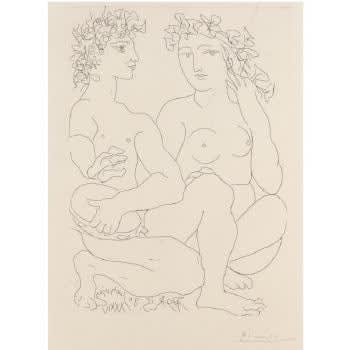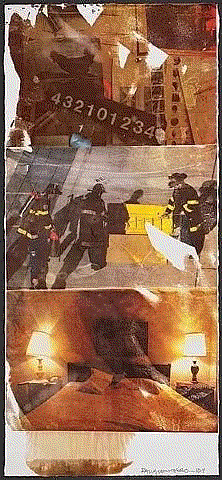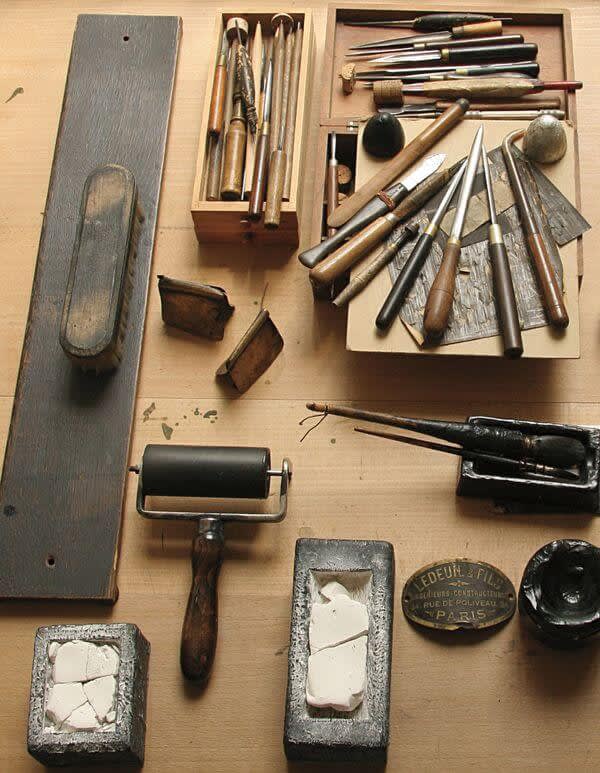Pablo Picasso
-
 Pablo PicassoEnfant en pied, 1982Lithograph29 1/2 x 21 5/8 ins 74.93 x 55.24 cm
Pablo PicassoEnfant en pied, 1982Lithograph29 1/2 x 21 5/8 ins 74.93 x 55.24 cm -
 Pablo PicassoFemme couchee, 1929-1982Lithograph22 x 29 5/8 ins 55.88 x 75.56 cm
Pablo PicassoFemme couchee, 1929-1982Lithograph22 x 29 5/8 ins 55.88 x 75.56 cm -
 Pablo PicassoNatura Morte au Verre, 1924-1982Lithograph22 x 29 ins 55.88 x 73.66 cm
Pablo PicassoNatura Morte au Verre, 1924-1982Lithograph22 x 29 ins 55.88 x 73.66 cm -
 Pablo PicassoJeune Couple Accroupi, L'Homme Avec un Tambourin( From the Vollard suite)Etching And Drypoint10 6/8 x 7 6/8 ins 27.43 x 19.81 cm
Pablo PicassoJeune Couple Accroupi, L'Homme Avec un Tambourin( From the Vollard suite)Etching And Drypoint10 6/8 x 7 6/8 ins 27.43 x 19.81 cm
Pablo Picasso was the first true rockstar of the art world. He influenced, not just painting and sculpture, but fashion, architecture and design, as well.
Early Years
Born in Malaga, Spain in 1881, Picasso took the family name of his mother, which he perceived as being more exciting than his father’s more common surname, Ruiz. His official birth name was Pablo Diego José Francisco de Paula Juan Nepomuceno María de los Remedios Cipriano de la Santísima Trinidad Ruiz y Picasso.
His father, Don Jose Ruiz, was an artist and art teacher, who recognized and encouraged his son’s artistic talent at a very early age.
Picasso had two younger sisters, Lola and Conchita. Conchita died of diphtheria when she was seven. Picasso was thirteen at the time of her death. After her death, the family moved to Barcelona, where Ruiz taught at the School of Fine Arts. Ruiz convinced school officials to let Picasso take the entrance exam for advanced classes at age 13. Picasso was admitted but lacked the discipline as a student in a structured environment.
His father sent him to the prestigious Real Academia de Bellas Artes de San Fernando in Madrid, hoping it would be a more challenging environment for Picasso, but there, too, Picasso was bored, stopped going to class and studied on his own.
Early Work
In 1900, at the age of 19, Picasso moved to Paris with his friend, Carlos Casagemas, an art student and poet. Casagemas fell in love with a young woman named Germaine Pichot, but the feelings were not reciprocal. Casagemas said that he would return to Barcelona and invited his friends to a farewell dinner. At the end of the dinner, Casagemas pulled out a gun, shot and wounded Germaine and then turned the gun on himself. The first bullet only grazed Germaine’s neck, but the second killed Casagemas.
The death of his friend led to The Blue Period (1901-1904) with blue the predominant color of each painting, depicting feelings of sorrow, including La Vie and other posthumous paintings of Casagemas.
The Blue Period was follow by The Rose Period (1904-1906), where both the themes and colors of his work were more mellow and serene. Boy With a Pipe, painted in 1905, sold in 2004 for $104 million.
The Rose Period paintings brought Picasso to the attention of art dealers in Paris, and he began to experience commercial success.
The Shift to Cubism
Between 1904 and 1906, Picasso’s work returned to more traditional themes, although his style remained strongly his own. In 1906, at the Louvre, Picasso saw an exhibition of sculptures of Iberian heads that changed his paradigm about painting. A 1906 portrait of Gertrude Stein, a long time patron, reflects an early shift in his style.
It was an exhibit of African masks that led Picasso to paint Les Demoiselles d’Avignon in 1907, a raw look at women in a brothel, a far cry from the polite and civil way they had been painted in the past. Les Demoiselles d’Avignon was unlike any painting that had come before and changed the art of Picasso and the modern world.
His cubist paintings were not well received but Picasso continued to refine his style. Georges Braque painted in a similar style during this time and the two artists formed a bond. Their cubist style, with its fragmented and deconstructed forms, showing multiple viewpoints and just the essence of a figure or structure, opened the door to abstract art.
Matisse, who was both a friend and rival of Picasso’s, harshly criticized his cubist works. Despite criticism, the works sold well.
Later Work
Picasso’s work continued to be innovate, emotional and influential. He transformed sculpture by using every day objects in collage. In 1937 Picasso painted Geurnica, which is considered by many to be the most important painting of the twentieth century.
Picasso remained in Paris, while his home country of Spain was being torn apart by civil war. In April of 1937 a squadron of German Aircraft, supporting Spanish fascists, dropped over 5000 bombs on the town of Guernica, which was being held by the communist opposition. More than 1600 civilians were killed. It was the first time that Europe had experienced such a terrible tragedy.
Picasso painted Guernica in response to the destruction. The painting is more than 11 feet high and 25 feet wide. Guernica was exhibited at the 1937 World’s Fair in Paris and then at other venues around the world. The touring exhibition was used to raise funds for Spanish war relief.
Personal Life
Picasso was married twice. He had four children by three women and was notorious for his affairs, especially those with women much younger than himself. One of his lovers, Dora Mar, is quoted as saying, “As an artist you may be extraordinary, but morally speaking you are worthless.”
Picasso traveled extensively throughout his life, but made France his home. He applied for French citizenship in 1940, but was refused because of his vocal praise of communism.
Legacy
Picasso died in his home in Mougins, France, in 1973, during a dinner party given by him and his wife, Jacqueline. Many of his works are housed in the Musée Picasso in Paris and the Museo Picasso Málaga in Spain.
In 1967, Picasso was commissioned to design a sculpture for the Daley Loop in Chicago. The sculpture is fondly referred to as The Chicago Picasso. He was offered $100,000 for the sculpture, but refused the money and gifted it to the city.
Picasso created more than 43,000 works of art. His sense of style and creativity made him a superstar, his name synonymous with great art.
-

Recent Acquisitions: Works by Tom Wesselmann
Picasso Exhibit Curated by Paloma Picasso May 1, 2025Tom Wesselmann (1931-2004) said that he wanted 'to make figurative art as exciting as abstract art.” He succeeded. Wesselmann began his career as a cartoonist...Read more -

New York Celebrating Fine Art Printmaking
March 26, 2025When we see a work of art by an artist whose style we know, we don’t have to look for the signature in the lower...Read more -

Carlos Cruz-Diez: Art Before the Digital Age
Pablo Picasso: Paintings and Prints on Exhibit in London March 5, 2025Before the generative artists working today, there were creators, like Op artist Carlos Cruz-Diez (1923-2019), who combined the science, technology and materials of their day,...Read more -

Odili Donald Odita: A Survey of Context on View at the Hyde Collection
Works by Andy Warhol on Exhibit in NY and, soon, in Madrid February 4, 2025I have always said that to be a good teacher is to be a better artist. This is how I want to help them see:...Read more -

Matisse and More at the Expanded AGB Museum in Lakeland
Alexander Calder: Solid Gold January 22, 2025What I dream of is an art of balance, of purity and serenity, devoid of troubling or depressing subject-matter, an art which could be for...Read more -

Dog Days of Summer: Susumu Kamijo and more...
July 23, 2024The works of some of our favorite artists are part of a show at the Timothy Taylor Gallery in Manhattan. Dog Days of Summer is...Read more -

2023: A Year of Gratitude at VFA
December 27, 2023At VFA the excitement and joy of this holiday season began early in December at Art Miami . It has been a wonderful year; starting...Read more -

Works by Basquiat, Picasso and Harvey Rayner at VFA
August 1, 2023In 1983, art curator Diego Cortez described Basquiat as the ‘Black Picasso’. When Basquiat was asked if he liked the comparison, he said, 'Not so...Read more -

Thrifting Picasso
May 23, 2023If looking for bargains in thrift stores doesn’t appeal to you, the story of a New York thrifter’s purchase might change your mind. On her...Read more -

A Look at the Works of a Young Picasso
May 18, 2023We’re going to be hearing a lot about Pablo Picasso this year. Museums in Europe and the United States are curating exhibits to commemorate the...Read more -

Commemorating Picasso. Katherine Bernhardt in Hong Kong. The Works of Carmen Herrera in LA
April 11, 2023Museums and galleries around the world are observing the 50th anniversary of Pablo Picasso’s death. Picasso was born in Spain in 1881 and died in France on April 8, 1973 at age 91.Read more -

The Masters Behind the Matrix: Fine Art Prints at VFA
April 16, 2019At Vertu, we are dedicated to the acquisition of, and education about, fine art prints. Fine art printmaking is both an art and a science. Over the centuries, artists have created masterful artworks on wood, copper and other matrixes to turn into high quality prints. The collaboration between artists and master printers often determines the quality of the work and, at times, the trajectory of an artist’s career.Read more -

Fine Artists and Master Printers
May 17, 2017There are artists whose vision can only be achieved by creating fine art prints. Techniques like oils, acrylics, watercolors or sculpture can not always achieve...Read more -

Jasper Johns Prints for Sale
March 23, 2016He's painted a flag so you don't have to think of it as a flag but only as a painting' -Jasper Johns Jasper Johns has...Read more



















